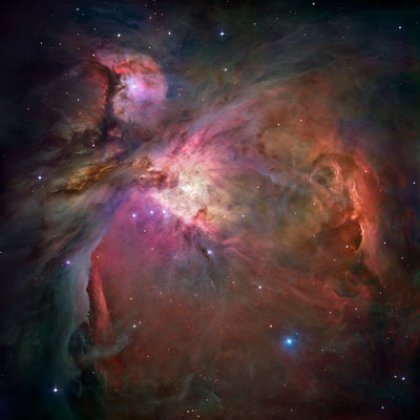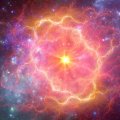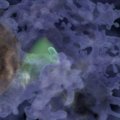
An international team of astrophysicists, including UQ’s Dr Holger Baumgardt, has shed light on the long-standing mystery of the binding force behind a cluster of unruly and rapidly swirling stars located in the famous Sword of Orion.
Using sophisticated computer modelling programs, the team found these fast-moving stars, visible in the night sky and known as the Orion Nebula Cluster, were potentially held together through the powerful gravitational pull of a black hole up to 200 times the mass of the sun.
Formed one or two million years ago, the Orion Nebula Cluster has long been known for its strange properties.
The stars in the cluster move at a rapid speed, as if the whole cluster was flying apart.
Compared to the number of low-mass (light-weight) stars that can be seen in the cluster, the number of high-mass (heavy-weight) stars are too few and especially rapidly-moving.
"These properties have been a puzzle to astronomers, given all the knowledge that they have about how stars are formed and distributed," Dr Baumgardt, of UQ's School of Mathematics and Physics, said.
Dr Baumgardt is co-author of the study that was recently published in The Astrophysical Journal.
The team set up a computer model of the Orion Nebula Cluster representing a tight cloud of inter-stellar gas containing the right combination of heavy and light stars.
Researchers then went on to calculate the movement of these stars in the system.
"In our model, we had to invent a new method of dealing with the gas and the way it is driven out from the cluster by the intensely radiating high-mass stars," said the study’s lead author, Dr Ladislav Subr, of Charles University in Prague.
Dr Baumgardt said such dense star cluster models were a challenge to compute due to the large number of calculations that had to be made.
The computations showed that, as the gas was being driven outwards, the cluster began to expand, explaining why most stars move rapidly.
Many of the heavy stars were sling-shot out of the cluster, while some were driven into the centre of the cluster and collided with the most massive star there.
At some point, this massive star became unstable and imploded into a black hole, with a mass about 200 times larger than the sun.
"Our scenario neatly accounts for virtually all observed properties of the Orion Nebula Cluster, that is, its low number of high-mass stars, and its rapidly-moving central stars, and suggests that the massive stars near the centre of this cluster are bound by a black hole," Dr Subr said.
The team said that the finding had dramatic implications for our understanding of how massive stars form and how such rich star clusters hatch from their gaseous cocoons.
"Having such a massive black hole at our doorstep would be a dramatic chance for intense studies of these enigmatic objects," said co-author Professor Pavel Kroupa from the University of Bonn in Germany.
Media: Dr Holger Baumgardt (07 3365 3430, h.baumgardt@uq.edu.au) or School of Mathematics and Physics Communications & Marketing Officer Aarti Kapoor (07 3346 9935, a.kapoor@uq.edu.au)
.jpg)









